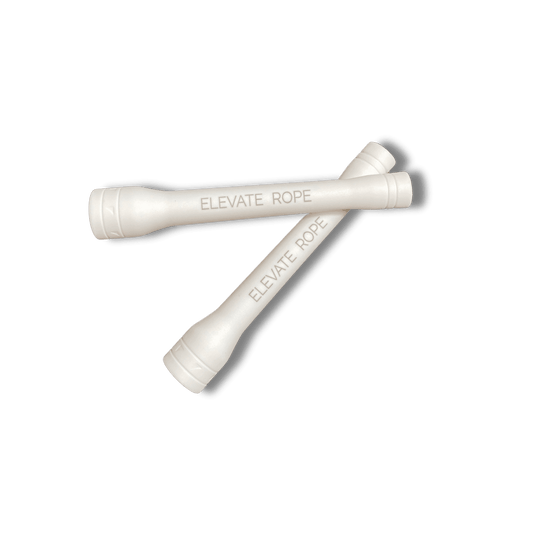In highly competitive areas, dental practices face significant challenges in standing out and attracting new patients. While traditional advertising methods, such as billboards and radio ads, may be helpful, they often fail to effectively target the right audience. This is where Local SEO comes into play. Let's look at the top 5 Local SEO Practices for Dentists in Competitive Areas.
Local SEO helps dentists reach patients in their immediate area by enhancing their online visibility, making it easier for people to find them when searching for dental services. Best of all, Local SEO is cost-effective and delivers long-term results.
Why Local SEO Practices for Dentists Matters
Imagine a potential patient in your area searching online for a “dentist near me.” They probably won’t scroll past the first page of results, and most will click on one of the top three listings. Without effective Local SEO, your dental practice risks being buried beneath competitors, losing out on this valuable organic traffic.
Local SEO ensures your practice is visible exactly when and where patients need you. By targeting geographically specific keywords and optimizing your online presence, you can dominate the search results within your community.
Key Strategies for Optimizing Your Dental Practice Website for Local SEO
To attract more local patients, your dental practice website must rank well in geographically relevant searches. This involves optimizing your online presence, content, and authority in your target location. Here are the strategies that can help:
1: Optimize Your Google My Business Profile
Imagine someone searching for a “dentist near me” and seeing your clinic prominently listed in Google’s local pack. A well-optimized Google My Business (GMB) profile is a cornerstone of Local SEO. It ensures your practice appears not only in search results but also on Google Maps, making it easier for patients to find and trust your services.
To optimize your profile:
-
Claim and Verify Your Listing: Start by claiming your GMB listing and verifying it to take full control of your online presence.
-
Provide Accurate and Complete Information: Ensure your business name, address, phone number, website link, and hours are accurate. Consistency across platforms strengthens SEO.
-
Add High-Quality Images: Showcase your office, staff, and equipment to make your profile more engaging and professional.
-
Encourage Positive Reviews: Patient reviews are critical for credibility. Actively ask satisfied patients to share their experiences on your profile, as good reviews can significantly impact your rankings and reputation.
Many dental practices that dominate competitive markets work with specialized dentist SEO experts like UppercutSEO.com to ensure their Google profiles are fully optimized with conversion-focused details that attract patients specifically searching for dental care in their area. By doing so, you create a reliable first impression while boosting your visibility in local searches.
2: Focus on Local Keywords
When potential patients search online, they often include location-based terms like “dentist in [city]” or “pediatric dental clinic near me.” Local keywords are the backbone of Local SEO, guiding search engines to connect users with your practice.
Here’s how to harness the power of keywords:
-
Conduct Keyword Research: Use tools like Google Keyword Planner or SEMrush to identify popular search terms specific to your area, such as “affordable root canal treatment in [city].”
-
Optimize Website Content: Incorporate these keywords strategically into your homepage, service pages, blog posts, and meta descriptions.
-
Prioritize Geo-Specific Phrases: Focus on terms that include your city or neighborhood, like “[service] dentist near [city].” This makes your practice more relevant to local searches.
By targeting the right keywords, you increase your chances of appearing in front of patients actively seeking dental care in your area.
3: Develop a Content Strategy for Local SEO
Content is the heart of your Local SEO strategy. Informative and engaging content doesn’t just fill up your website—it showcases your expertise and establishes trust with potential patients. For dentists, localized content allows you to connect directly with your community and address their specific concerns.
Here’s how to create impactful content:
-
Optimize Website Pages for Local Keywords: Design your homepage and service pages to reflect terms like “top orthodontist near [city]” or “teeth whitening for [city] residents.”
-
Create Location-Specific Landing Pages: If you serve patients from multiple cities or neighborhoods, create dedicated pages for each area. These pages can highlight specific services and connect with local audiences.
-
Publish Regional Blog Posts: Write articles that resonate with your community. Examples include “5 Oral Hygiene Tips for [City] Families” or “Common Dental Issues During [City’s] Winter Season.”
-
Address Common Questions: Add FAQ sections to answer local patients’ concerns, such as “What is the cost of dentures in [city]?” or “Are there emergency dentists open near [city]?”
4: Build Local Backlinks
Backlinks are essential for improving search engine rankings, as they act as endorsements from other reputable websites. For dentists, earning local backlinks strengthens their authority and visibility in competitive markets.
Here’s how to earn meaningful backlinks:
-
Collaborate With Local Businesses: Partner with medical clinics, wellness centers, or community organizations. Exchange links or co-sponsor events to boost visibility.
-
Contribute Guest Posts: Write articles for local blogs or news sites about oral health, linking back to your website.
-
List Your Practice in Directories: Submit your information to online directories, such as dental-specific listings and local business directories.
Quality backlinks signal search engines that your practice is trustworthy and relevant.
5: Ensure Your Website Is Mobile-Friendly
With most local searches happening on smartphones, having a mobile-friendly website is non-negotiable. If your site isn’t optimized for mobile users, you risk losing patients to competitors who offer a better browsing experience.
Here’s how to optimize your site for mobile:
-
Use Responsive Design: Ensure your website adapts to all screen sizes, providing a seamless experience across devices.
-
Improve Load Times: Compress images, clean up your code, and utilize caching to ensure your pages load quickly. Slow websites frustrate users and hurt rankings.
-
Add Click-to-Call Features: Include clickable phone numbers to make it easy for potential patients to contact you directly from their phones.
A mobile-friendly website ensures you don’t miss out on patients searching for dental services on the go.
How Do You Measure the Success of Your Local SEO Efforts?
To measure the success of your local SEO efforts, utilize tools like Google Analytics and Google Search Console. These tools track website traffic, rankings, and conversions, providing valuable insights to refine your local SEO strategy.
With data-driven analysis, you can identify areas for improvement, optimize your online presence, and make informed decisions to boost your local search visibility, drive more patients to your practice, and ultimately grow your business with targeted online marketing efforts.
Conclusion
Local SEO is a necessary component of any dentist's online marketing strategy. By claiming and optimizing your Google My Business listing, utilizing location-based keywords, establishing high-quality local citations, leveraging online reviews, and creating localized content, you can enhance your visibility in search engine results and attract more patients to your practice.
With the right local SEO strategy, you can outshine your competitors and grow your practice. Trust you've learned a lot from these SEO practices for dentists.






